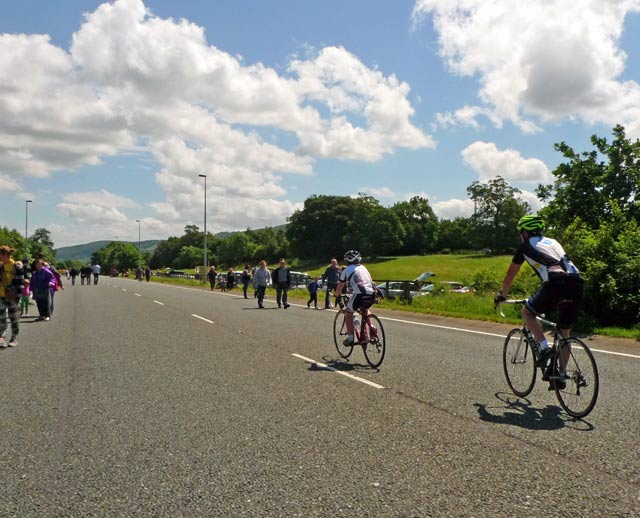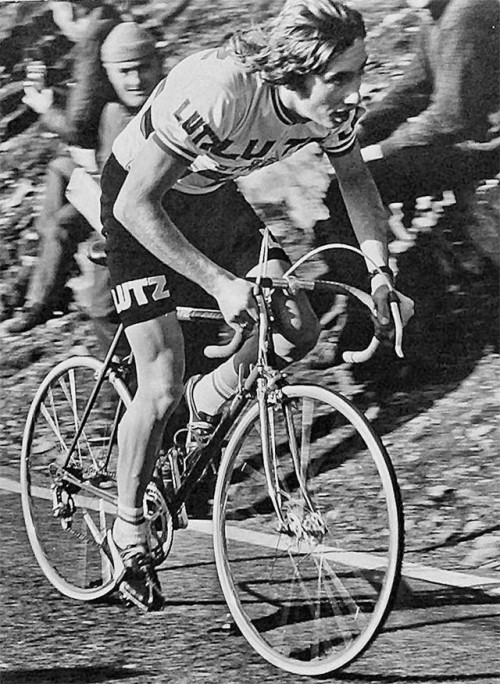A few simple tips for more efficient cycle training.
If you are new to cycling or have a very basic level of fitness, the most important thing is to spend more time on the bike. When you are unfit – the good news is that whatever you do, you will see relatively large improvements in fitness. The ‘fitter’ you become, the relatively harder it is to eke out even more fitness gains.
The first tip is simply to cycle more.
1. Cycle more
If you want to do a 100 mile ride, you will need to find more time to cycle. You will want to be doing a few 2-3 hour rides at the very least. Preferably a few 3-4 hour rides to get used to long distances. You could do a 100 mile ride on the back of one hour training rides, but your legs will be sore the next day, and you will struggle towards the end.
The trick is often finding time to be able to cycle more. If you live a busy life, a good solution is commuting by bike. This may be the whole journey or even just part of it. If you have many family commitments, you could try and cycle out to some venue and meet your family there on bike. If you have a roof rack, you can easily bring back the bike on the car. I’m sure your family won’t mind you going to a posh restaurant, whilst you are dressed in lyrca.
2. The pyramid of training intensity
Something that has served me well for the past 20 years is paying a rough attention to this pyramid of training intensity.
This is my rough training pyramid – recovery rides come under base / endurance. The division between categories are not strict. An endurance ride may merge into a ‘sweet spot’ training. If you’re not doing hill climbs, you might want to not do any level 4 max intervals at all. The point is that generally you spend more time at a lower intensity.
Most of your training will be to build up base aerobic fitness. This is a long endurance ride. If you are new to cycling, it is important to start with this endurance training. If you have been cycling, you still need to work on this endurance side.
If you are pressed for time, you may want to jettison the lowest level of easy training rides, and concentrating on more threshold / higher level types of training. But, as a rough rule of thumb, you definitely want to pay attention to both endurance and speed work.
Different types of training
When training, I try to have a specific purpose to the training. It tends to be one of these four types.
- Recovery ride – This involves taking it easy and give yourself a chance to recover from the previous ride. Don’t under-estimate importance of proper recovery. Your interval sessions and races will be much more effective if you can do them fully recovered. Sometimes, it can be hard to do a recovery ride; it can be a very low average speed – low intensity (60-65% of max HR.) If we are riding with other people, most recovery rides become typical – mid-range moderately hard. If you are really stretching your capacity – high intensity intervals and very long distances, proper recovery rides become more important. Note many people feel that ‘easy’ recovery rides of 1-2 hours offer better recovery than sitting on the couch. Commuting can make excellent recovery rides.
- Steady endurance ride. At around 65-80% of heart rate. This is a good effort level to improve aerobic fitness and improve endurance. In winter, I tend to make many rides at this intensity.
- Threshold Training. Training at around 85% of max heart rate. ‘Comfortably hard’ – the level just before the accumulation of lactic acid. Just below threshold training is sometimes known as ‘sweet spot’ training. This can see big improvements in fitness without being overly stressful and enables a higher volume of training. It’s a level you can maintain for a couple of hours.
- High level intervals – training above threshold level 90-98% of heart rate. The aim is to increase tolerance to acidosis, increase power and efficiency of VO2 max. This is for those who really want to increase speed, usually those racing. They are much more intense and require more training. See: more details on interval training tips
Vary Training
One mistake, people often make is just to do the same kind of training every week. When commuting it’s easy just to get into a slow gentle rhythm. Many beginners end up doing all rides at a ‘moderately hard’ level. This is fine for base training, but, if commuting is your main form of training, you should try mix it up. On alternate days, try commuting home very fast. Try different routes, which are a bit longer but give an opportunity to do some speed work. This can be a time trial to see how quickly you can cover a distance or it can be a series of intervals, finding some local hills.
If you have limited time, you will see most improvement in your cycling fitness from training at a high intensity. If you want to improve your fitness for a quicker 10 mile time trial. You need to be training at this race intensity.
Motivation to train
If you get really inspired and motivate to do hill climb intervals, the chances are this will make good training for you. I’m not a great one for getting on a turbo and sticking to HR zones and power zone. What motivates me to train is going around the countryside cycling really fast up hills. It’s not always very scientific, but it has got me quite fit! Similarly, other people may need to find like minded cyclists to go out and train with. There are others, I know who can do four hour endurance rides on a turbo!
Positive frame of mind
A big part of improving cycling fitness is having a good attitude to cycling and training. If you are in a positive frame of mind, training tends to be more effective. It will inspire you to go out even when the weather is not so good. It is important not to get discouraged by lack of perceived improvements. It can be difficult to judge your performance. If you enjoy your cycling, you will naturally want to go out and improve your fitness. It’s not just the miles you do, but your frame of mind too.
Race and targets
Having something to aim for is good. If it is a big ride in August, try to have some smaller goals on the way. When you know a big event is coming up next month, it is very good for focusing the mind and disciplining your training. The best training will also be to try and replicate what you will be doing. If you know your doing the Etape d’Tour, you need to be focused on being able to cycle 100 miles, with 3,000m of climbing.
Nutrition / Hydration
I’m not a big fan of fancy diets. It is important to take a balanced diet, based on common sense. When you are stressing your body through training, it is more important to eat good foods.
- Try maintain constant energy levels
- Make sure you have good recovery food / drink, after hard training ride
- More cycling nutrition tips
Loose Weight
Losing a few lbs makes a big difference to climbing and the enjoyment of cycling. Lose 5kgs, is going to help your cycling uphill.
Discipline vs flexibility
To improve fitness, it does require a certain discipline. We need to do different types of riding. We need to be able to push ourselves in order to stretch capacity. We also need the discipline to do recovery rides and take time for days off, when we need it. However, there is an important line between determination and obsession. Don’t panic, if you can’t meet one session. If you are tired, have the flexibility to take a day off. For some people, over-training can be as much as a problem as under-training.
Buy A Better Bike
If all else fails spend a lot of money on a more expensive and better bike. This is a very well known trick for leading to instant improvements in cycle fitness.
Related





Never sure if you mean sweet spot or sweat spot, I guess both are a good description 😀
Cheers, Matt I always get that mixed up.
Haha everyone loves to see the guy who has tried to buy an improvement in fitness.